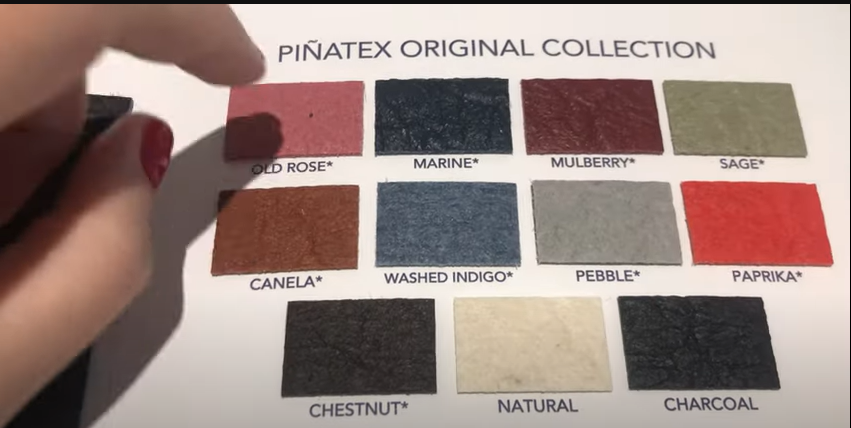6. BioFabricating Materials¶
So this is what triggered my interest for Fabricademy! The fish skin!
I have to be honest I want to do ALMOST everything but since time is limited...
GROW SOMETHING¶
In my "grow something" quest I am growing a skin from fruit waste: trying pineapple waste and oranges for sure. I will also try Acai waste and make a comparisson.
Update: Pineapple skin still growing.
CRAFT SOMETHING¶
My "craft something" will be fishleather and/ or I will make an effort to mimic the skin of the Okopipi and Harlequin frogs with an agar agar bio plastic mix. I am doing this to go back and stay close to the core idea of being inspired by the rainforest.
In addition I will make an effort to make a conductive bioplastic by embedding the recycled copper treats that I found earlier in a pile of electronic waste.
Excited!
Research¶
On a weekly basis part of my research time is devoured/ devoted to knowing where to source the materials needed either by buying them at a store, finding them in a waste pile for recycling or reuse or finding an alternative that eliminates the issue of scarcity and having to buy it online. It is truly a battle between the real Amazon and Amazon.com. Sustainable vs Commerce seems to be an ongoing balancing act.
References & Inspiration¶
Artists and brands working with biomaterials¶
Surinamese designers and craft¶
- Biomaterials such as seeds are often used in jewelry in Suriname and across Rainforest nations. Many indigenous and maroon women have an income from this craft. More recently fashion designers have incorporated local biomaterials from the rainforest in their designs as well.
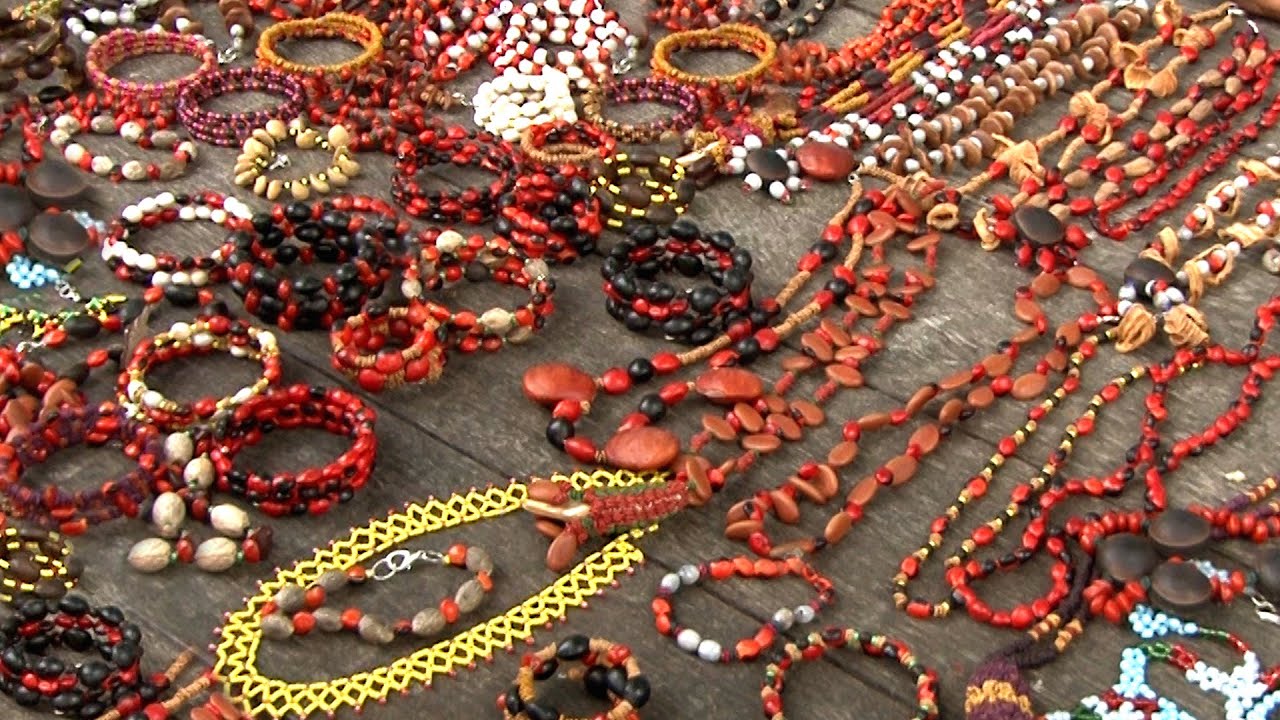
The website wildflower shows which seeds from the Amazon are used as beads in jewelry
Link WildflowerSur
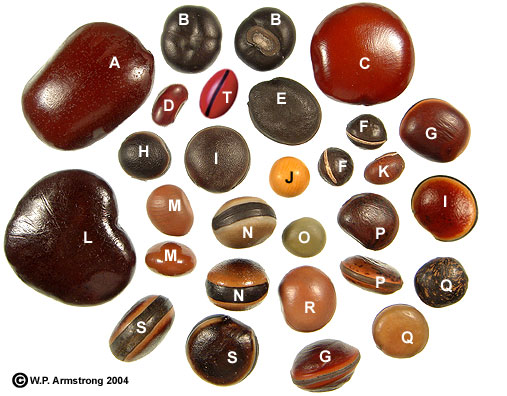
On occassion local professional fashion designers incorporate biomaterials in their designs.
In Suriname Fashion week 2014 there was a photoshoot that made an impression on me because the model was literally wearing local vegetables.
 Photo credits: Helio Phoelie; Design: Warda Marica
Photo credits: Helio Phoelie; Design: Warda Marica
The Local UMA fashion brand incorporates biomaterials in their jewelry designs and tropical wood in their signature bags.

Source: UMA Store on Facebook
Other designers working with rainforest biomaterials¶
Another site using biomaterials is Rainforest Chica from Brazil
Pinatex was developed as a leather alternative by Carmen Hijosa founder of Ananas Anam in Barcelona.
This link is about the development of Pinatex, which interests me because of my work with local pineapple farmers. I a second link an influencer demonstrates different designer products and material samples from Pinatex.
With regards to the research in the design aspect, here are some of my sources of inspiration:
Loes Bogers research on biomaterials
Loes Bogers
Huitillo dye made in the Amazon
Presentation THE ICELANDIC BIO-MATERIAL CHRONICLES FABRICADEMY CLASS OF 2022-2023 OTHER EXPERIMENTS
THE ICELANDIC BIO-MATERIAL CHRONICLES
- Inspiration:
Overview material research outcomes¶
Tools¶
- Fabricademy tutorials on biomaterials
- Wooden Spoon
- Electric food scale
- Glass Bowls
- Steel pot
- Electric stove
- Timer ( I used my phone time app)
- Mold of about 20 cm diameter ( or whatever size or form you prefer for your project)
- Textile: canvas
- Biochromes or food coloring
- Biomaterials. I used charcoal, coconutfiber, glass
Process and workflow¶
- Bioplastic: my first try
My first try to make bioplastic is based on the formula of Loes Bogers's fabricademy page on Agar Foil 1 Agar foil
Unfortunately it burned! I just stepped away from the pot for a few minutes, so my lesson is to keep a close eye. Although it burned, I could see that the material consistency would have been ok so I decided to go a little bit more advanced next time.

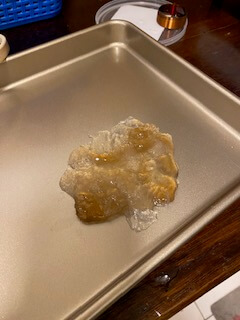

- Conductive bioplastic
My second try I decided to immediately try a conductive plastic according to the same formula of agar agar bio plastic as before. I decided to use the copper thread I redeemed from an old sound system. I taped it at the sides of the mold and kept it as flat as possible without taping it to the bottom of the mold since I wanted the thread inside the bioplastic and not on the bottom. The bio plastic poured nicely and I now just had to wait for the material to cure well before I take it out of the mold.


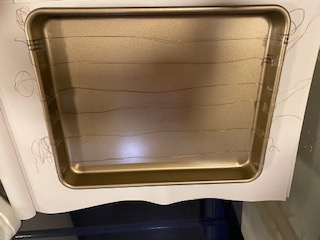

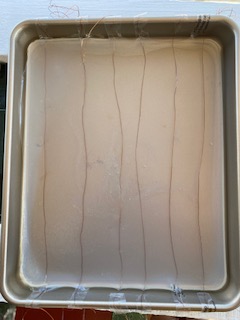


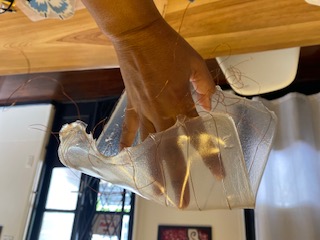

- Mimicing Okopipi Frog skin: Black bioplastic with blue outdoor canvas

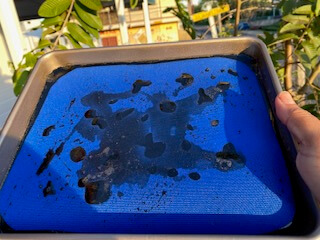
On my third try I deciced to make the okopipi frog skin which is blue with black spots. I decided to use a blue piece of outdoor canvas, cut holes for the black spots and if I liked the first try to later do the skin pattern on canvas in a lasercutter.
To make the bioplastic black, I used charcoal ( for Barbeque of gardening) from woodwaste.
I wrapped it in an old piece of jeans and crushed it with a hammer to fine powder. Then I mixed it with hot water to create a black dye, seeved out the debri and used the remained black water to create the bioplastic according to the formula of 3 Agar flexible bio foil.
I cut the sheet of blue canvas in the form of the metal mold and layed it flat on the bottom without tape, which I should have done in retrospect because canvas floats and doesn't saturate.
Once the black liquid was thick I poured it in the mold on the blue canvas but this did not stay on the botom, it floated to the top. So I decided to leave it there on the black bioplastic instead of under it. I then left it to cure for 4 days before taking it out of the mold. While studying it I found dat the black bioplastic was almost forming a buble in the holes of the canvas which actually looks quite reality like compared to the frog skin.
Fun fact, I saw the tiny okopipi frog once and not in Suriname but in an aquarium in the museum of natural sciences in Taichung, Taiwan! It was nice to meet a fellow national of my country at the other side of the world (LOL).


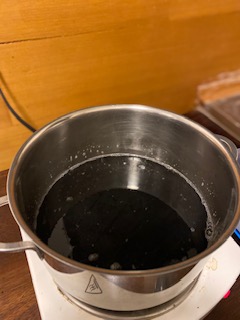

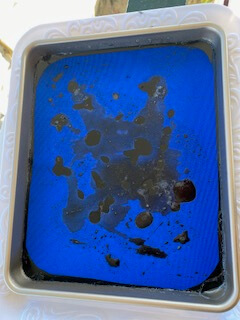

 width=300 align=left}
width=300 align=left}
- Another frog skin maybe? Purple Harlequin Toad (Did not succeed)
I liked the result of the okopipi frogskin so much that I deciced to craft another frogskin: the purple and black Harlequin toad skin. This time I made the black bio plastic based on another formula with gelatine 2. I also mixed it with some Gado Libi dye to try and give it a red undertone but not sure if I'll succeed there. It took a bit longer I found and not to waste to much time, I put the liquid in a electric oven, while preparing the purple-pink liquid for the skin patterns. This time I decided to try and make it all from bioplastic. I knew it would be challenging to make it look like the pattern was in the skin and not on it. I decided to make some preforms from a grass yarn/rope that I made and stick them in the black bioplastic. Once the black bioplastic is dry, I'll pull them out and I can then pour in the pink-purple colored bioplastic and wait for it to cure.
The end result was not good though: the mix did not cure and was a mush and it was full of mold, so it had to go.
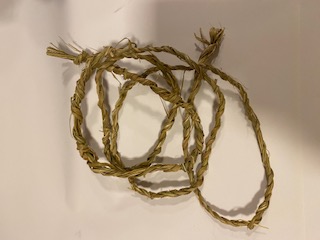

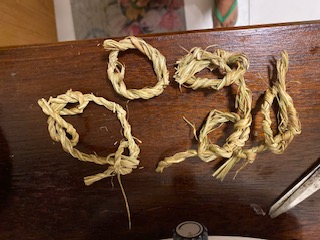



- Red Earthy Bio plastic (by accident) Unfortunately my first attempt to make pink-purple bio plastic turned out to be more of an red earth color and the reason is that I was not completely happy with the bio color compared to the patern color of the Purple Harlequin so I cheated a little bit with food coloring ( sorry) which went sooooo wrong! Too much blue. So I will go back to the original Gado Libi-Alum-Lime mix dye and keep it completely bio with another bio blue dye.
In any case, I did make a bio plastic from the red earth color based on the formula: 2 I also included copperthreads to make it conductive. It took a week to dry, it did not fuse perfectly with the agar mix, some of the red pieces fell out and I had to wipe off fungus that grew on it almost daily. In the end the final piece does look and feel like a skin of an unknown creature, just not the purple harlequin toad. (LOL)

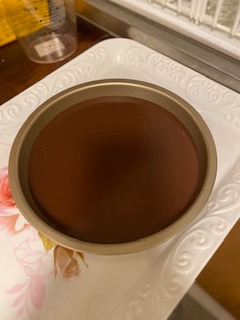
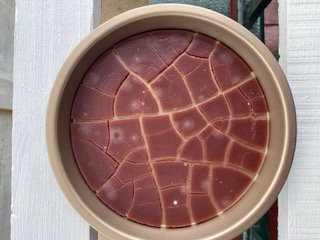
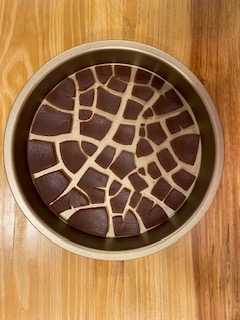


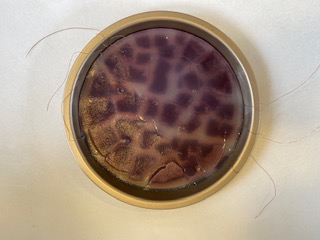


- Coconut weave or straw bioplastic To experiment further I mixed a piece of coconut weave that naturally grows on the tree in between the leaves. I mixed it with a light blue agar mix based on this formula 4. It took a week to dry and fused well. The material is flexible, rubber-like. I also included copperthreads to make it conductive.


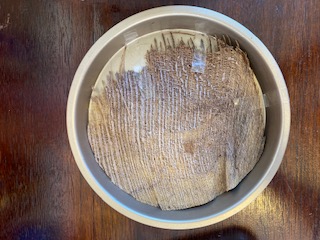
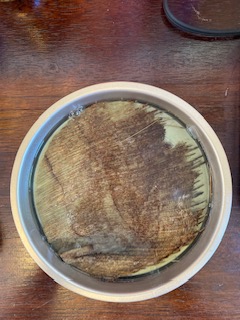

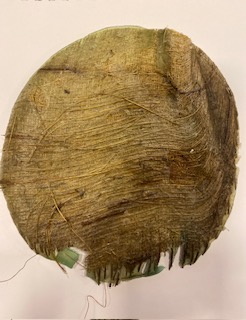
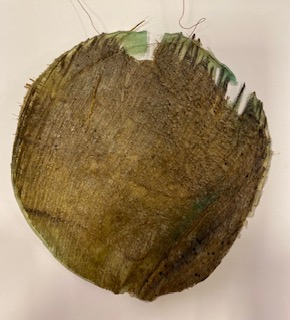
Documenting and comparing experiments¶
Here are the detailed formulas and ingredients of bioplastics.
TEST SERIE BIO-PLASTIC¶
| Material pic | Material name | polymer | plastifier | filler | emulsifier | Water | Other |
|---|---|---|---|---|---|---|---|
| -------------- | --------------- | --------- | ------------ | -------- | ------------- | ------ | ------ |
 |
Agar foil | Agar 5 gr | glycerol 15 ml | water 250 ml | Copper tread | ||
 |
broken red earth | agar 3 gr and gelatine 20 gr | glycerol 15 ml | 400 ml color dye bath from Tradescantia pallida Purpurea dye with Alum+Lime+blue foodcoloring mix | Mint Essential oil | ||
 |
light blue bioplastic | agar 2 gr | glycerol 1 ml | salt 5g | 200 ml water | drop of blue food coloring | |
 |
black agar bioplastic (Mimicing Okopipi Frog skin) | Agar 5 gr | glycerol 15 ml | Wood Charcoal 20 gr | 250 ml water | Blue canvas | |
 |
coconut weave bioplastic | agar 2 gr | glycerol 1 ml | coconut weave | salt 5g | 200 ml water | drop of blue food coloring |
Ingredients & Recipes¶
Prepare this recipe 1 by collecting the ingredients necessary, to be found in added slides. For each material the variation is added after the recipe.
Recipes¶
Second pour of light blue bioplastic based on conductive agar bioplastic with salt
 Variation: added a drop of blue food coloring
Variation: added a drop of blue food coloring
-
recipe for conductive agar bioplastic : based on Agar foil Variation: copper threads in the mold for conductivity (no salt added) ↩↩
-
recipes for broken red earth: red bioplastic recipe based on:
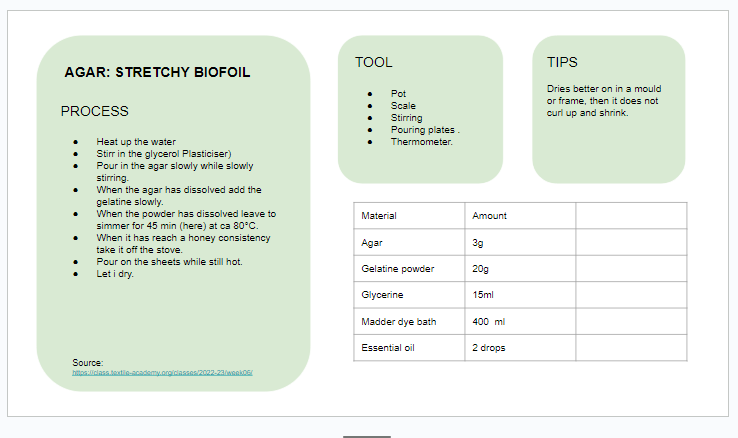 Variation: Red dye from Tradescantia pallida Purpurea /Purple heart dye with Alum, Lime and blue foodcoloring mix ↩↩
Variation: Red dye from Tradescantia pallida Purpurea /Purple heart dye with Alum, Lime and blue foodcoloring mix ↩↩ -
recipe: black agar bioplastic based on:
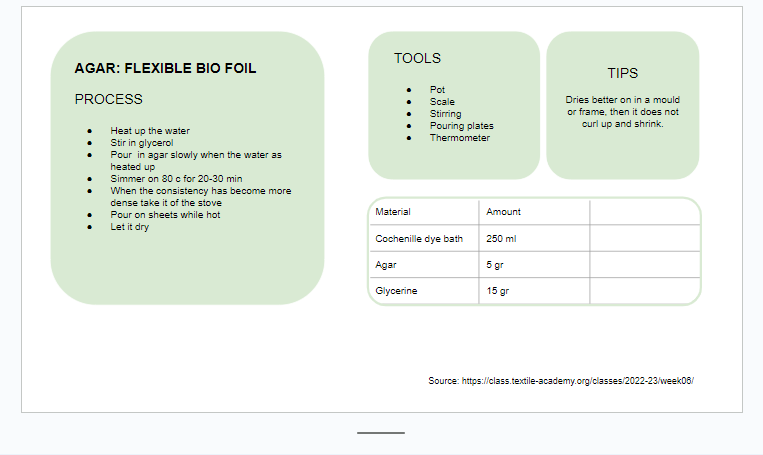 Variation: added crushed charcoal ↩
Variation: added crushed charcoal ↩ -
recipe: coconut weave bioplastic: light blue bioplastic based on conductive agar bioplastic with salt
 Variation:
Added a drop of blue food coloring
Added Coconut weave in the mold ↩
Variation:
Added a drop of blue food coloring
Added Coconut weave in the mold ↩

